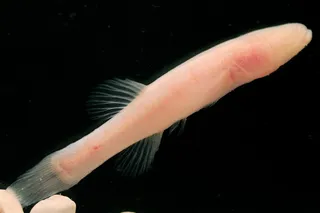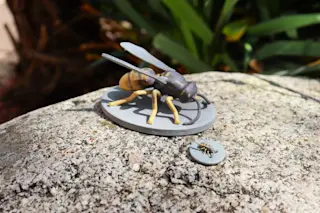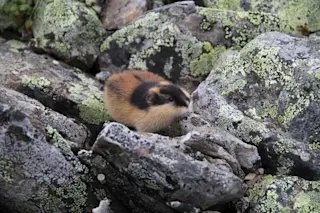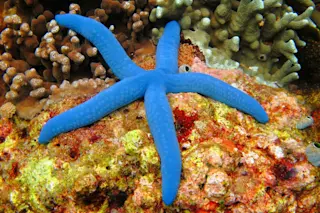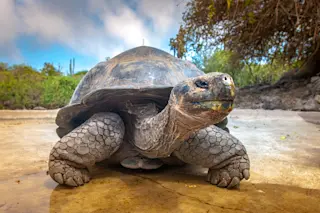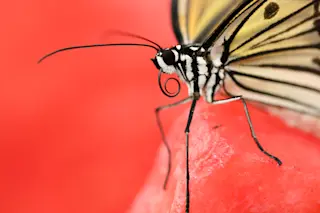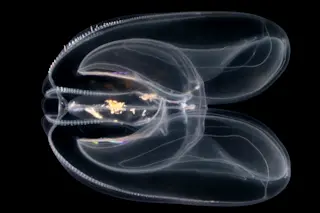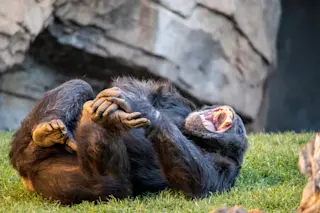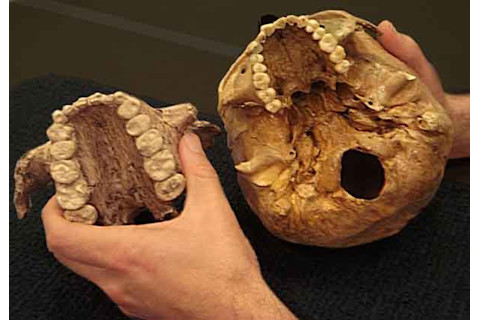
What's the News: It turns out that the strong-jawed, big-toothed human relative colloquially known as "Nutcracker man" may never have tasted a nut. In a finding that questions traditional ideas of early hominid diet, researchers discovered that Paranthropus boisei, a hominid living in east Africa between 2.3 and 1.2 million years ago, mostly fed on grasses and sedges. "Frankly, we didn't expect to find the primate equivalent of a cow dangling from a remote twig of our family tree," researcher Matt Sponheimer told MSNBC.How the Heck:
The researchers studied the early hominid's diet by drilling off the enamel of 24 teeth from 22 different P. boisei specimens found in Kenya, ages ranging from 1.4 to 1.9 million years old.
The carbon isotopes in the pulverized enamel allowed them to look at diet because grasses and nuts have different carbon signatures: Nuts, as well as shrubs, herbs, and cool-season grasses, undergo a kind of photosynthesis known as C3 photosynthesis, which stores carbon-12, whereas sedges and tropical grasses undergo C4 photosynthesis, which stores carbon-13 in addition to carbon-12.
The carbon isotopes in these 24 P. boisei teeth revealed that 77% of their diet consisted of C4 plants like grass and papyrus, and that's only an average percentage: The range was from 61 to 91% grasses and sedges.
Looking at the oxygen isotopes in the fossil teeth, the researchers also concluded that P. boisei lived in a "semi-arid savannah with woodlands along rivers or lakes."
What's the Context:
P. boisei's diet is statistically indistinguishable from the diets of grass-grazing animals. As lead author Thure Cerling puts it, "they were eating at the same table" as zebras, pigs, warthogs, and hippos.
These early hominids fed more on grasses than any other human relative. Today, there is only one primate that primarily eats grass, and that's the gelada baboon.
In the past 50 years, most studies of ancient teeth focused on size, shape, and microwear, rather than isotopic analysis. In a 2008 study of the microwear of P. boisei's teeth, researchers concluded that they probably didn't eat anything hard or tough.
Another 2008 study looked at Nutcracker Man in Tanzania and concluded that these hominids ate a grass-rich diet, but their findings were only based on two teeth. Using more teeth (and different individuals), this present study shows that P. boisei's grass-eating habits spanned from 1.4 million to 1.9 million years ago over an 800-km-wide region of East Africa.
Archeologists believe that around 2.5 million years ago, the australopithecines "split into the genus Homo, which produced our species, and the genus Paranthropus, which dead-ended."
The Future Holds: This study calls into question the nut-eating habits of the genus Australopithecus too, so now researchers want to use the same technique to see if the isotopes measure up. Reference: Thure E. Cerling et al. "Diet of Paranthropus boisei in the early Pleistocene of East Africa." PNAS. doi: 10.1073/pnas.1104627108 Image: Melissa Lutz Blouin/University of Arkansas


